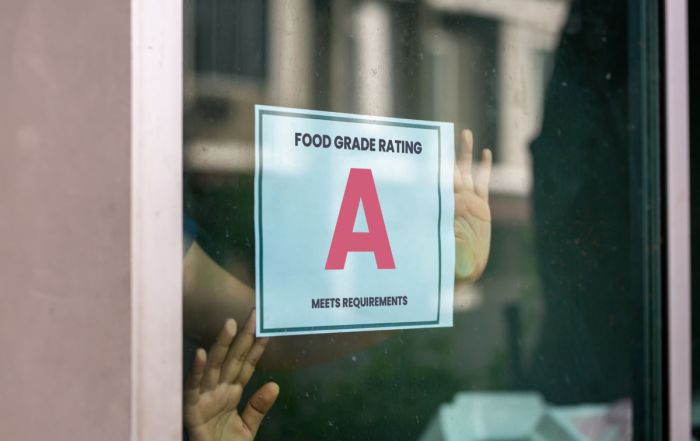Changing Climate: The Unseen Impact on Food Safety
In June, I was asked to participate in the Allinfoodz podcast, put on by a colleague, Dr. Amit Sharma, at Penn State University. One of the points Dr. Sharma wanted to discuss was the impact of climate change on food safety, which is something I was certainly aware of, but not something I had done much research on. However, when preparing for the interview and podcast, it was interesting to learn more about the relationship between the two.
Although the topic of climate change can be a political hot button in an age where everything seems to be to the extremes, regardless of the cause, there is evidence weather patterns across the globe are changing, and this change does have an impact on overall food safety in the complex global food system. One thing we can all agree on is climate change and food safety impact all of us.
It shouldn’t be difficult to understand the impact rising temperatures could have on food safety, and I am guessing anyone who reads these blogs has likely taken a food safety training class and understands the temperature danger zone – the range from 41°F to 135°F where bacteria multiple the fastest. Thus, it stands to reason that the warmer our environment becomes, the greater the chances for a foodborne illness outbreak. A few years ago, the World Health Organization released a report that noted when the ambient temperatures are greater than 41°F, cases of salmonellosis in Europe would increase 5% to 10% for each 1.8°F increase in the average weekly temperature. Several different studies have noted very similar results in various countries and cities around the world.
…the warmer our environment becomes, the greater the chances for a foodborne illness outbreak….cases of salmonellosis increase 5% to 10% for each 1.8°F increase in weekly temperature average.
As temperatures increase, extreme weather events are more likely to occur. Just last month, we had six extreme weather events occur in the US on the same day, June 13. While Yellowstone National Park was dealing with flooding that closed the park, the Midwest and Southern part of the US were hit by a derecho, while other parts of the Midwest and South dealt with a severe heat wave, wildfires raged through Alaska and the Southwest, and the west was still in the midst of a drought.
What does this mean for the foodservice operation? Be vigilant. Changing weather patterns will increase the incidence of foodborne illnesses over time. Bacteria, viruses, and parasites will mutate and change, new concerns will emerge. Stay up to date with these issues to have the best chance at protecting your business and your customers.
I do hope you all had a happy and safe 4th of July. If you haven’t kept up to date on the SafeBites on-demand webinars, be sure to watch out most recent recording and submit your request for the certificate, if you need it. Be sure to reach out if you have any questions about food safety, we are happy to help. Risk Nothing
READ MORE POSTS
Embracing Technology for Enhanced Food Safety in Foodservice Operations
Technology. We love it, we hate it. I’ve always been fascinated by technology; I remember getting my first Blackberry in the mid-90s and thinking it was the pinnacle of technological advances. Before that, I remember ordering a dictation program in college that was going to revolutionize the way I “typed” my assignments. Looking back, it really wasn’t worth the box that the program came in. Now, we have ChatGPT that will write the entire paper for us!
Meat Color and Doneness: Persistent Pinking
Late in June, my family and I were able to visit the Black Hills, an area of the country in which I have not had the opportunity to spend much time. One evening, as we dined at a local restaurant, I observed a table across the dining room sending back a dinner. While I couldn’t hear the entire conversation and I certainly wasn’t trying to eavesdrop, it was apparent that the customer was unhappy with the cooking of their hamburger and was sending it back because it was too pink in the middle. That immediately brought to my mind the phenomenon known as persistent pinking. A term I became familiar with because of work done by some colleagues here at Kansas State, which they present each summer to a group of foodservice operators who join us on-campus for an in-depth week-long look at all things food safety.
Quat Binding – Why this Can Have a Disastrous Impact on Your Sanitation Program.
In June, I had the opportunity to represent FoodHandler and speak on food safety behavior for customers of Martin Bros. Distributing in Waterloo, Iowa. One of the questions that was asked caught me a little off guard. The question was about quat binding. It caught me off guard not because it was a bad question, but only because it was not something I had previously been asked nor had not yet been exposed to the phenomenon. However, I soon learned that in certain jurisdictions, it is resulting in changes to how sanitizing cloths are to be stored in sanitizing buckets (or not) in the foodservice industry. When I returned home from the trip, I had to dig into it to learn about what quat binding is and how it might impact foodservice operations.
Are Grades for Foodservice Inspections a Good Idea?
I generally try to stay away from controversial topics in my blog, but this is one I thought it might be interesting to discuss. Occasionally on my travels, I will come across a state or a local jurisdiction that requires foodservice inspection scores be posted in the window of the establishment. The idea is to allow would-be customers the ability to see how the foodservice operation in which they are about to eat scored on their latest health inspection.










